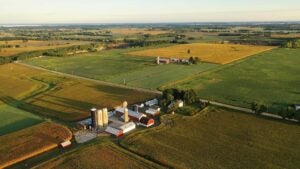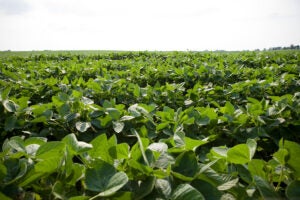After farmer sentiments soured to a new low since July 2022, they’ve since rebounded. June’s Purdue University-CME Group Ag Economy Barometer was conducted between June 12 and 16 and rose 17 points to a reading of 121. June’s sentiment improvement left the index near the April reading of 123 after a one-month swoon in May.
The swing in sentiment was driven by producers’ more optimistic view of the future as the Index of Future Expectations rose 25 points to 123. At the same time, their perception of the current situation was unchanged.
The Index of Current Conditions reading, at 116, was the same as in May. Although 40 percent of respondents indicated that their operation was worse off than it was a year ago, attitudes changed when asked to look ahead a year.
In June, 20 percent of respondents said they expected their financial condition to improve over the next year, compared to just 13 percent who answered in May. Additionally, the percentage of producers expecting good times for U.S. agriculture in the upcoming five years rose 8 points to 33 percent, while the percentage expecting bad times fell 3 points to 41 percent.
A more optimistic view of the future was also reflected in the Farm Financial Performance Index which rose 10 points in June to a reading of 86. The rally in corn and soybean prices for harvest time delivery that got underway in late May and extended into June was likely a contributing factor to the financial performance index rise. Although respondents were more optimistic about both crop and livestock returns this month, expectations for “good times” for livestock producers increased more than for crop producers.
Now still isn’t viewed as a good time to make large purchases, but farmland values hold promise
Producers still aren’t wanting to make large purchases now. The Farm Capital Investment Index rose 5 points in June to a reading of 42. Nearly three-fourths of respondents said this is the wrong time to make significant investments in their farm operation, while just 16 percent of producers this month said it’s an excellent time to make investments.
The rise in interest rates shares responsibility with the rise in prices for equipment and new construction as the two key reasons cited by respondents for viewing this as a bad time for investments. This month 37 percent of respondents cited the increase in prices, while 35% percent chose rising interest rates as the primary reason it’s a bad time to invest.

Even though producers are viewing now as a bad time for purchases, they became more optimistic this month about farmland values as both short and log-run farmland value indices rose. The short-term index, which asks producers about their outlook over the next 12 months, jumped 16 points to a reading of 126, its highest reading since last November.
Meanwhile, the long-term index, which asks producers to look ahead 5 years, rose a more modest 6 points to a reading of 151, pushing that index up to its highest level since February 2022.
Producers expect farmland cash rentals to increase next year
This month’s survey also included a question targeted toward corn and soybean producers regarding their expectations for farmland cash rental rates in 2024.
Twenty-five percent of the corn and soybean producers in this month’s survey said they expect 2024 cash rental rates in their area to rise above 2023’s rates. In a follow-up question only posed to respondents who said they expect rental rates to rise, nearly one-third (32 percent) said they expect rental rates in 2024 to increase up to 5 percent, while nearly half (49 percent) look for rates to rise from 5 up to 10%, both compared to 2023.

Producer opinion of the new farm bill
Several questions were posed in the June survey to learn more about what producers are thinking concerning the passage of a new farm bill. Corn and soybean producers continue to view the Crop Insurance title as the most important component of the farm bill, followed closely by the Commodity title.
In both May and June, the survey included questions asking corn/soybean producers if they expect Congress to raise the PLC reference prices for corn and soybeans. This month half of those respondents said they were looking for Congress to raise both the corn and soybean reference prices.
Finally, in response to ongoing concerns about the recent Supreme Court ruling upholding California’s Proposition 12 mandating housing standards for hogs processed into pork that will be sold in California, respondents were asked about the likelihood Congress would overturn Proposition 12 as part of a new farm bill.
Producers were split in their response to this question. Just over one-third (36 percent) of respondents said it’s either somewhat or very unlikely that Congress will try and overturn Proposition 12 in a new farm bill, while one-fourth (25 percent) of farmers in the June survey said it’s at least somewhat likely Congress will take on Proposition 12 in new farm bill legislation.
The more optimistic view of the future held by June respondents was reflected across the board as the Farm Financial Conditions, Short and Long-Term Farmland Value Expectations, and Farm Capital Investment indices all improved in June compared to May.
»Related: 4th of July cookout costs are down from a 10-year high


